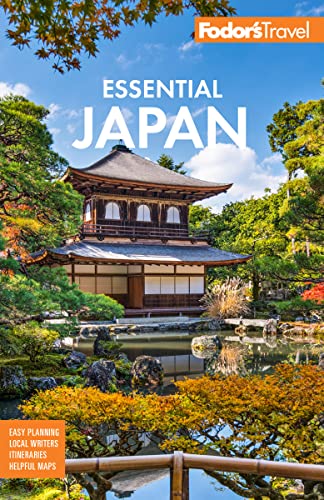The Ryokan
You’re likely to find Japanese hospitality polished, warm, and professional pretty much anywhere you stay—but nowhere more so than in a ryokan: a traditional inn.
Ryokans are typically one- or two-story wooden buildings where the guest rooms have tatami floors; the bedding—stowed by day in a closet—is rolled out at night. The rooms have hardly any furniture—perhaps one low dining table and cushions on the floor, a chest of drawers with a mirror, and a scroll painting or a flower arrangement in the tokonoma (alcove)—but every room in a proper ryokan will have windows with sliding paper screens looking out on an exquisite interior garden or scenery. Rates are per person and include the cost of breakfast and dinner. Some top-of-the-line ryokans might expect first-time guests to have introductions from a known and respected client.
Costs
Ryokans of august lineage and exemplary service are expensive: expect to pay ¥30,000 or even ¥50,000 per person per night with two meals. There are plenty of lower-priced ryokan in Japan, which start from ¥10,000 per person, including breakfast and dinner, though these may not have garden views. The Japan National Tourism Organization has a listing of some of the latter.
Ryokan Etiquette
Remove your shoes as you step up from the entryway of your ryokan, and change into slippers. A maid will escort you to your room. (It might take you two or three tries thereafter to find it on your own. Ryokans pride themselves on quiet and privacy, and the rooms are typically laid out in a labyrinth of corridors, where you’re seldom aware of the presence of other guests.) Slippers come off at the door; on tatami, only socks/stockings or bare feet are acceptable. Relax first with a cup of green tea, and then head for the bath. In ryokans with thermal pools—not all have them—you can take to the waters at nearly any time and you'll be told of any time restrictions upon checking in. Be mindful of the bathing rules ; wash and rinse off thoroughly before you get in the tub for a long hot soak. After your bath, change into a nemaki, the simple cotton kimono you’ll find in your room, that doubles as sleepwear—or as standard garb for an informal stroll. These days, ryokans often have private baths, but especially in more venerable establishments (even those with astronomical rates), all facilities may be shared.
Ryokans don’t have legions of staff, and will appreciate if you observe their routines and schedules. Guests are expected to arrive in the late afternoon and eat around six. The front doors are sometimes locked at 10, so plan for early evenings. Breakfast is served around eight, and checkout is typically at 10. It might feel rather regimented, but just remember that your only task is to relax.
Food
Not every inn that calls itself a ryokan offers breakfast and dinner. Indeed some offer only breakfast; some inns have no meals at all. Seek out those that do; it's an important part of the experience. And while some ryokans will allow you to pay a lesser rate and skip dinner, it's worth paying extra for the feast of local specialties in beautiful dishes of all shapes and sizes (sometimes served in your room). When you’re finished, your maid will clear the table and lay out your futon bedding: a mattress filled with cotton wadding and (in winter) a heavy, thick comforter. In summer the comforter is replaced with a thinner quilt. In the morning the maid will clear away the futon and bring in your Japanese-style breakfast: grilled fish, miso soup, pickled vegetables, and rice. If you prefer, the staff will usually be able to come up with coffee and toast, not to mention a fried egg.




